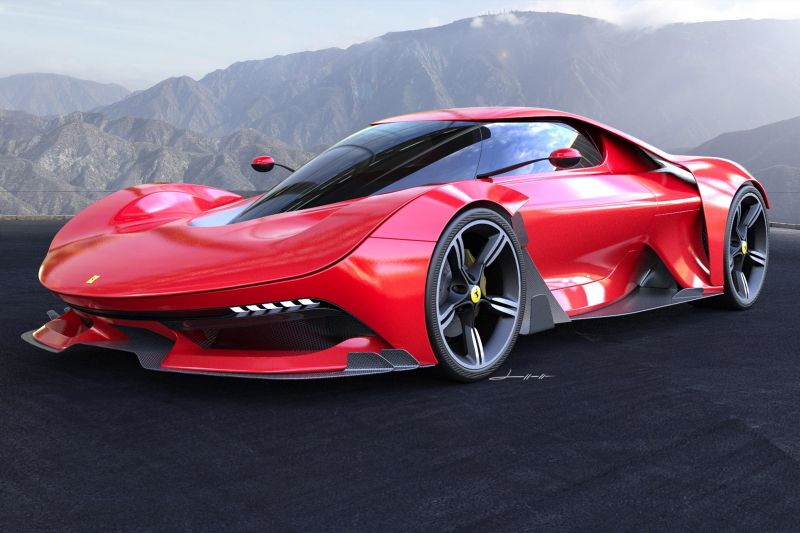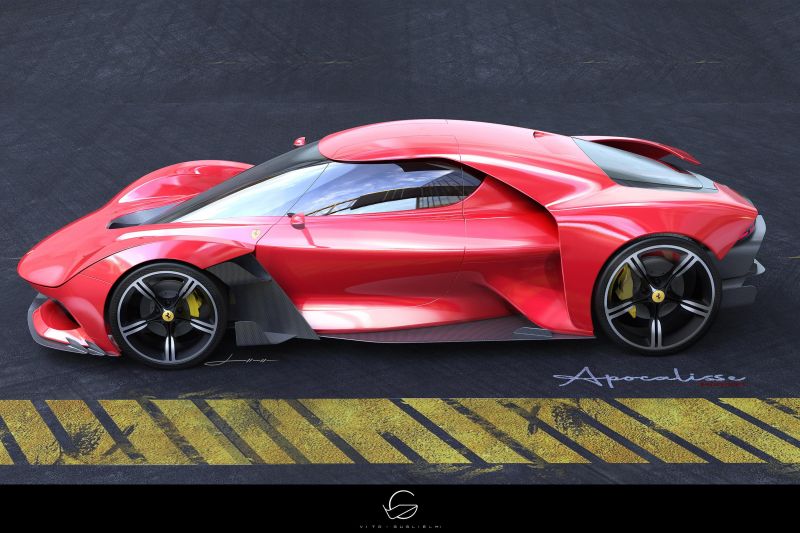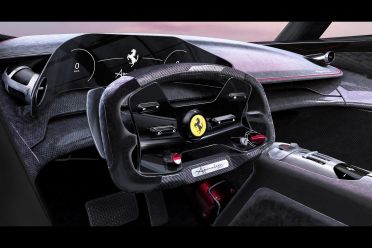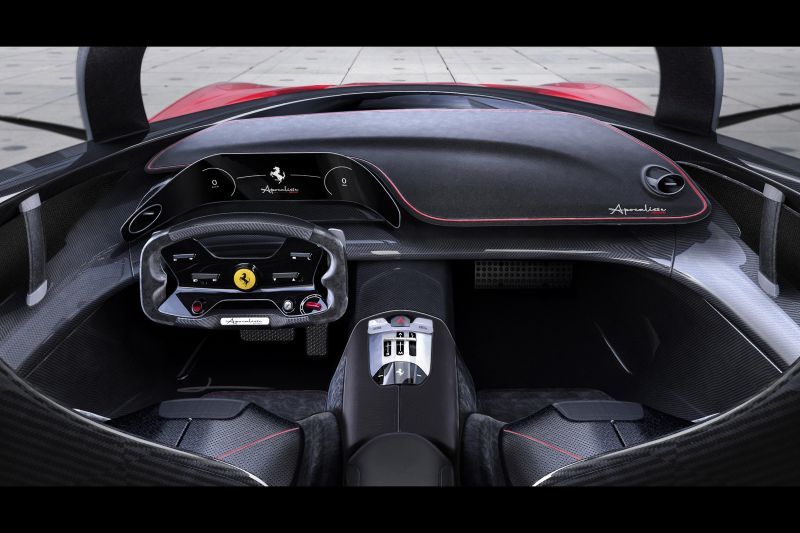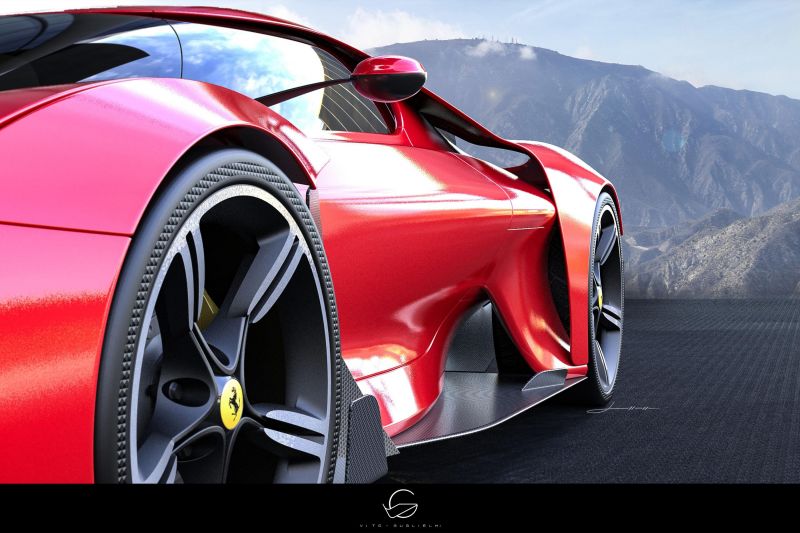Designer
Vito Guglielmi is an Italian designer with a transportation design degree from the IAAD of Turin.
His career started at “UP DESIGN” studio of Rivoli (Turin), where he contributed to the development of the Alfa Romeo Costruzione Artigianale 001, and since 2019 he works as a freelance designer.
Project
During the quarantine, Vito brought to life his vision for the next generation Ferrari V12 mid-engined supercar – called the “Apocalisse”. As he describes his source of inspiration: “Imagine a bullet going full speed and catching a red silk cloth”.
The Ferrari Apocalisse has the proportions of a mid-engine supercar with a cab-forward design. The heavily-inclined windshield integrates with the side windows for a pillar-less wraparound look, while its aerodynamic glass extension reaches even further than the front axle.
The bonnet, highlighted by a sharp line, sits lower than the fenders, leading to the “shark” nose. The classic Ferrari grille is missing, and the bumper features two elongated air intakes housing the LED headlights.
Underneath, there is a huge splitter with carbon-fibre extensions, a central air duct and double fins on the sides.
As Vito describes it: “The headlamps are low, down into the shark nose, only showing themselves to a careful observer, leaving a clear bonnet. This peculiarity drives a sensation of purity, looking for a compromise between elegance and aerodynamics.”
The profile is characterised by the muscular body with a dramatic slope behind the front wheels and a complex shape for the side intakes.
Behind the wheel arches, aerodynamic components made from carbon fibre convey the turbulent air flow from the wheels which are partly uncovered. Then, the air is guided through the sculpted doors to the double side intakes for engine cooling. At the same time, the large side sills and the flying buttresses create more downforce.
The traditional red shade contrasts with the naked carbon-fibre components. The five-spoke wheels (larger diameter for the rear axle) feature yellow centre caps and yellow brake calipers, matching the Ferrari emblems on the fenders.
The rear is dominated by a huge diffuser, leaving the wide rear tyres largely exposed and integrating the centrally-mounted, dual exhaust tailpipes above the licence plate. The tail lights consist of four ultra-slim LED units accommodated in a full-width notch, below the Ferrari lettering on the tail.
Another signature element of the Apocalisse are the rear fenders, forming double floating wings that serve as extensions of the flying buttresses (similar to the Ferrari SF90 Stradale). The fact that the whole body-coloured rear structure is floating above the main carbon-fibre tail, brings lightness to the overall shape.
Those two elements are connected through the rear windscreen which also serves as a glass engine cover showcasing the beautiful V12.
Inside the two-seater cabin, the carbon fibre monocoque structure stays mostly uncovered, partly dressed with Alcantara on the floating dashboard and centre console, hand-finished with red stitching.
The futuristic, rectangular steering wheel incorporates most of the controls – including the manettino dial for changing driving modes – and the gear-shift paddles. Behind, there’s a fully digital and curved instrument cluster, making up for the lack of a central infotainment screen.
Other notable details are the tube-shaped climate vents inspired by racing, the fire extinguisher under the dashboard and the automatic gearbox controls which resemble a gated shifter.
Verdict
The Ferrari Apocalisse is an interesting design study for a future V12 mid-engined hypercar. While some may criticise it for being over-designed, its complex shape can be justified by the functional aero components that are present all around the car, following the current trend in the automotive industry.
Its heavily sculpted body with dramatic cutouts and the extensive use of carbon fibre makes the Apocalisse look ready for the racetrack.
Instead of following the safe road of using ready-made elements from the current Ferrari model range, Vito took a brave step in evolving the design language and adding his own unique touches.
Having said that, he was wise enough to integrate details like the SF90 Stradale flying buttresses, the La Ferrari muscular doors and mirrors, and the SP1 Monza shark nose, injecting Maranello heritage to his design.
If you liked the Ferrari Apocalisse, you can find more examples of Vito’s work on his Instagram or Behance profiles.
The Ferrari Apocalisse was independently designed by Vito Guglielmi for show purposes as a free-time project, and is not associated with Ferrari.





